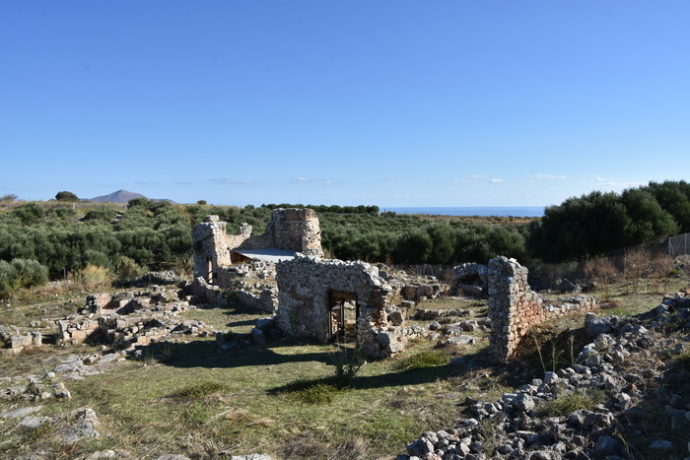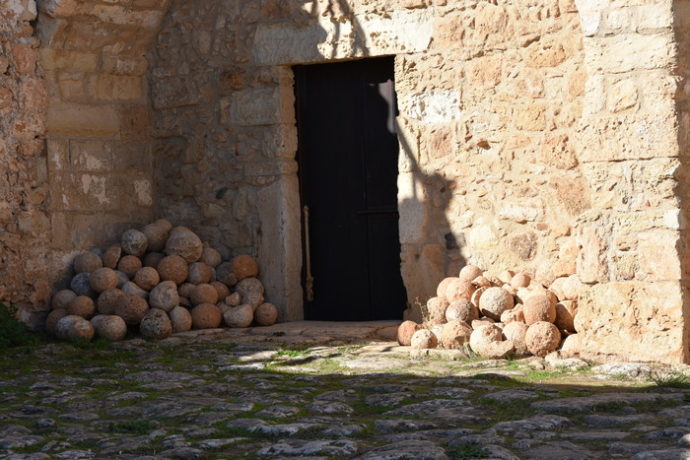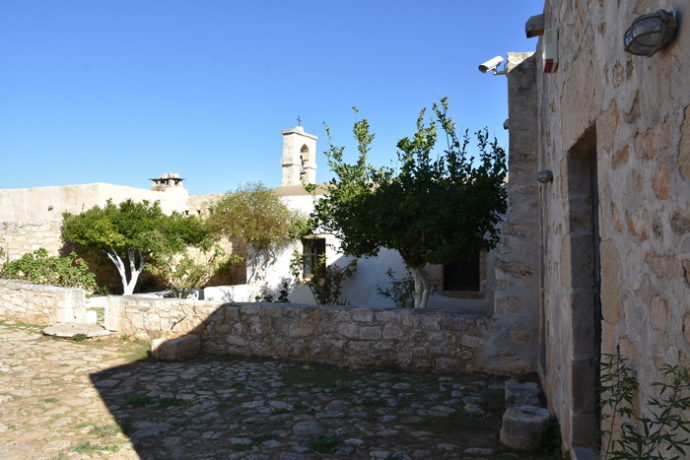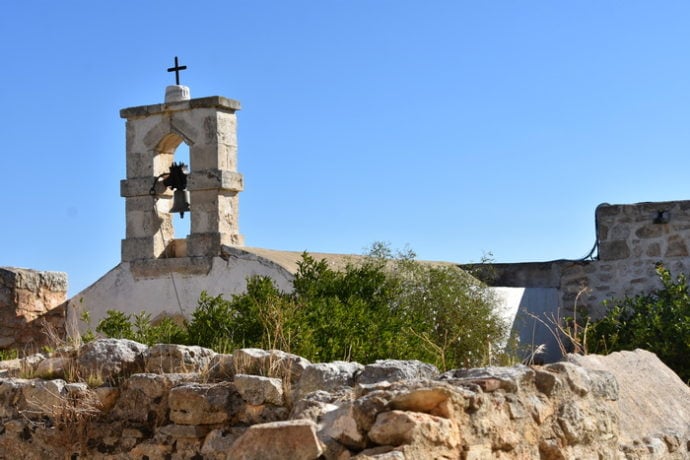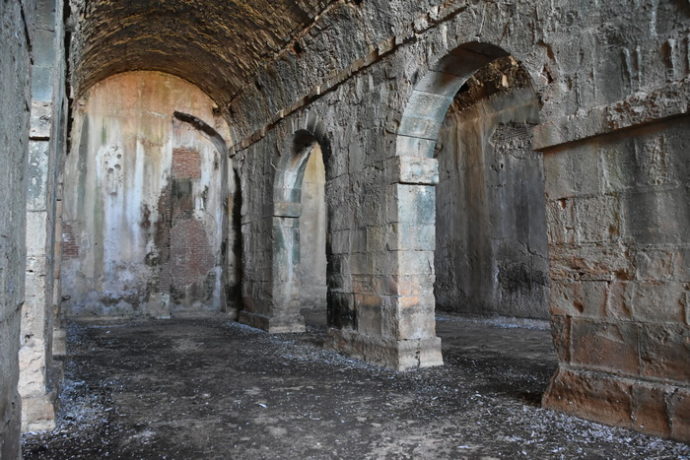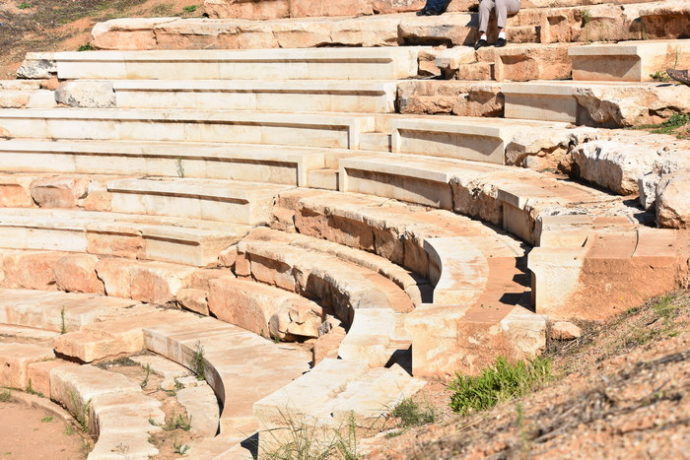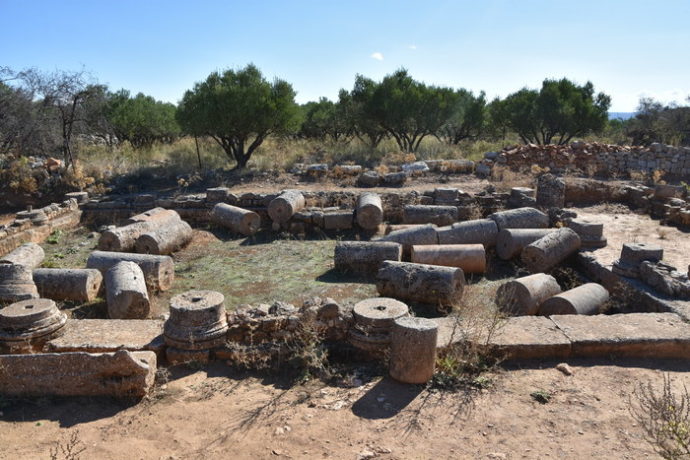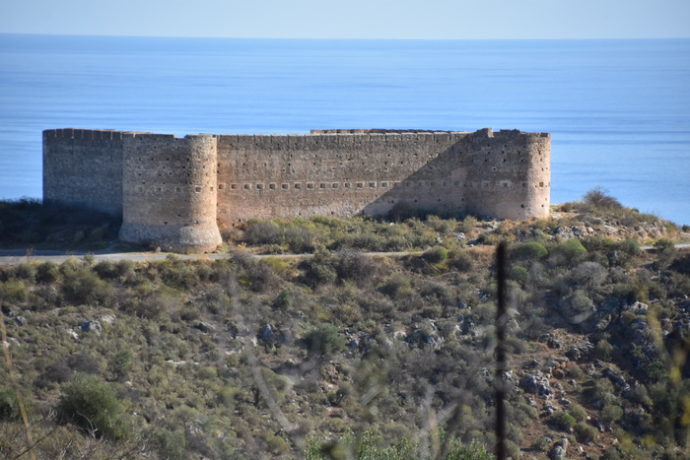The archaeological site of Aptera; located on the top of a flat hilltop overlooking the natural bay of Souda, less than 10 kilometers from the city of Chania, in Crete, offers a unique view of the sea and a rich history.
The location already appears in Linear B inscriptions which date back to 1450 BC approximately, proving that the site might have been occupied from as early as those times and until 1964 when the monastery in Aptera was finally abandoned. Aptera remained one of Crete’s most important cities from the V century BC up until early Christian times.
The Archaeological Site
The extensive site sees continuous excavation activities going on in the various different areas, which means that at times, some parts of the site may be closed to the public.
The main entrance is close to the Monastery of Agios Ioannis Theologos; one of the newest buildings remaining on the site. In the nearby area, one can find the Roman cisterns, a bath complex, as well as a classical Greek temple.
The Roman cisterns and the baths
Impressive lines of ancient brick give shape to the walls and archways that make the roofs of the underground Roman cisterns. This impressive work of fine engineering has been very well preserved and is a clear testament to Roman times on the island.
Below the cisterns is the big area of the Roman baths complex. This makes one wonder how much water was actually required to fill the vast spaces in the cisterns.
The Theatre
Venturing further inside the site, it is possible to admire the remains of an ancient theatre, which still preserves its unique acoustics and many rows of seats in a semicircle arrangement.
The theatre of the ancient city opened to the public after the excavation works were completed and partially restored in 2016. Some shade can be found there, due to the magnificent olive groves that surround the theatre.
The Roman Villa
Moving along a well-marked path towards the south, through a thick area of bushes of malotira (Cretan mountain tea), visitors can reach the Roman villa.
Endless rows of collapsed pillars spread on the ground. The rest of a first or even second-century peristyle allow one to imagine how impressive the villa must have been during its times of splendor.
The External Walls and the Castle
The paths continue to reach Megala Horafia, which ends at the edge of the village where there is an enormous section of the ancient walls surrounding Aptera.
Alternatively by taking the path that leads to the north and towards the sea, the magnificent view of Souda and of its islets can be seen below. At the back, a stunning Turkish castle overlooks the bay in a defensive position.
The fort was built by the Turks after the Cretan Revolution (1866) as part of a program to control Crete from a network of towers. The fortress was constructed to control the valley of Vamos, key passage to reach Chania as well as to guard the Gulf of Souda and to offer support to the close by the fortress of Intzedin.
The works were ordered by the Turkish governor of Crete, and it represents an example of military 19th century architecture .
See all the latest news from Greece and the world at Greekreporter.com. Contact our newsroom to report an update or send your story, photos and videos. Follow GR on Google News and subscribe here to our daily email!



